The Custard Apple originated in tropical America and is considered one of the most delicious fruits brought to India. It is also discovered in its natural state in many different regions of India. Andhra Pradesh, Maharashtra, Orissa, Assam, Karnataka, Bihar, and Tamil Nadu are the states where it is grown. A farmer in Telangana has grown these plants successfully on his farm and is earning huge profits. Below we will learn about the success story of Mr. Naresh, custard apple plant cultivation details, his experiences, and the profits involved in his Custard apple farm.
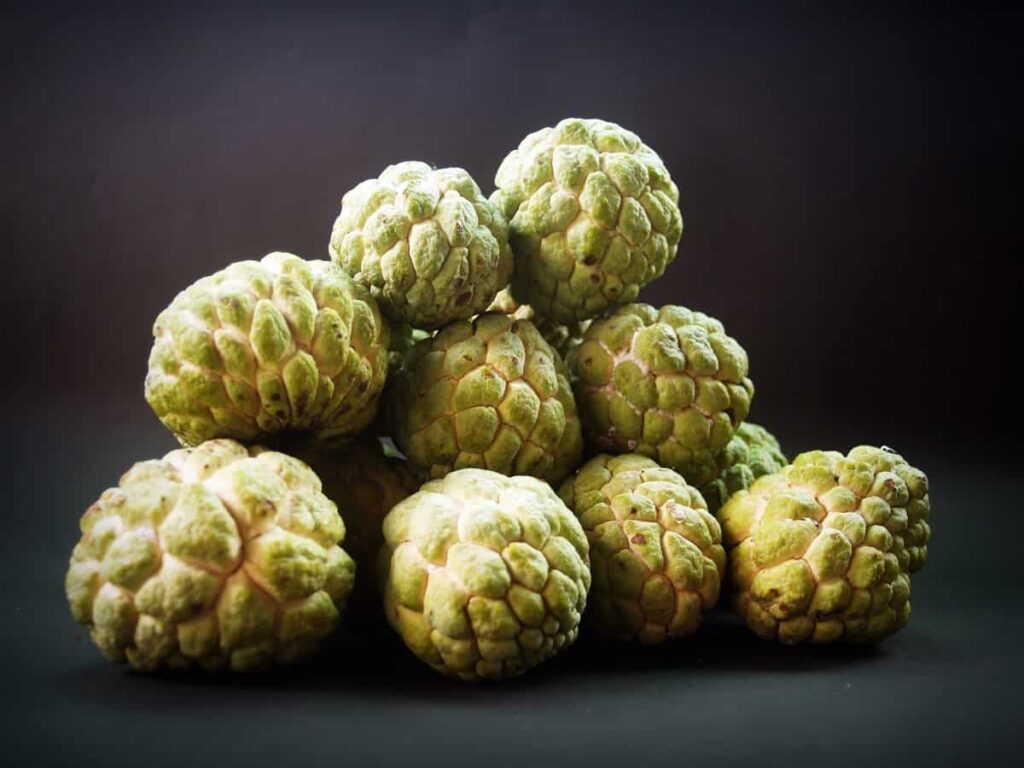
How this farmer is earning 24 lakh from custard apple cultivation
What is the ideal climate to grow custard apples?
Since custard apples originated in the tropics, they do best in locations with mild winters and average humidity. For a brief time throughout the winter, the tree is dormant. Its development is stunted by prolonged cold and frost. Temperatures exceeding 40 degrees Celsius induce significant blossom drop in northern India, and the high temperatures also hurt fruit development and output owing to soil moisture stress.
It’s possible that a tropical environment isn’t ideal for growing more fruit. As a result, fruit development and yields are enhanced in warm subtropical climates. They do quite well even at a thousand meters above sea level. If you want it to thrive and bear fruit, you just need 50–75 centimeters of rain every year.
In case you missed it: Top 16 Steps to Boost Custard Apple Yield: How to Increase Fruit Size, Quality, and Production
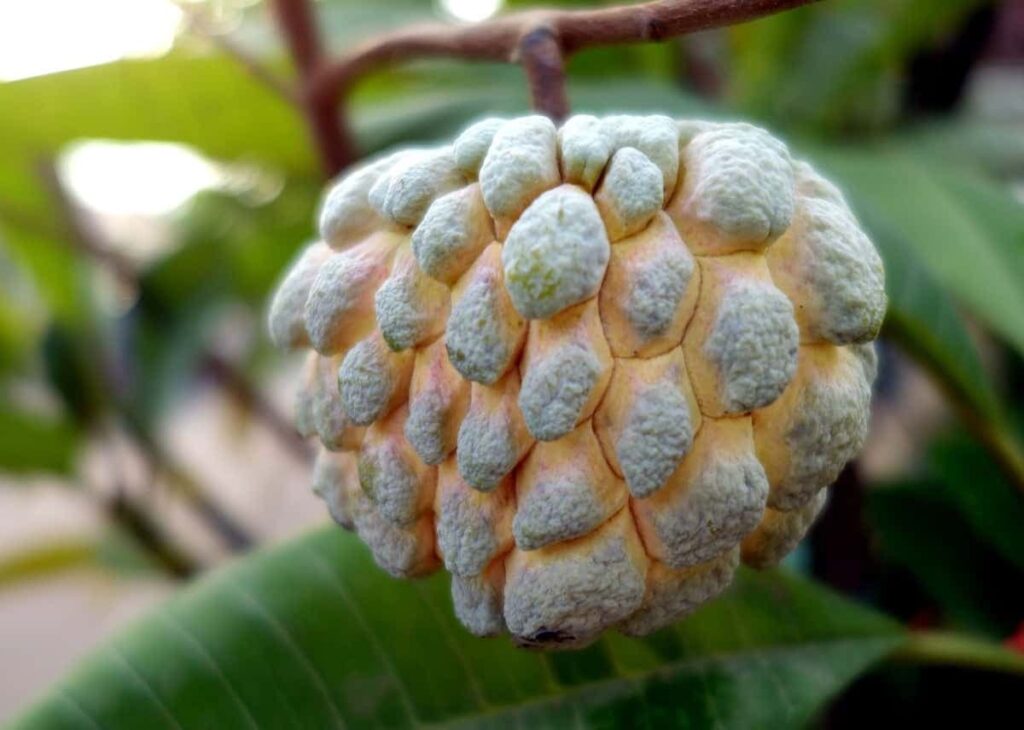
Custard apples can also endure poor weather, albeit it will reduce their productivity; however, despite abundant blossoming, no fruit formed in the summer in northern India owing to the region’s dry heat and low humidity. Custard apple fruits can only be set and grow properly under conditions of high temperature, high humidity, and intermittent rain.
Is custard apple self-pollinating?
When properly grown, the Custard apple can pollinate itself. For these trees to produce fruit next year, you only need to plant one. They thrive, though, when pollinators are around. A particular beetle pollutes the Custard apple tree in its natural environment.
How much water is required for custard apples?
Regarding drought tolerance, the Custard apple tree is on the low end. If you want this tree to thrive, you’ll need to provide it with 700 millimeters of water per year. This tree can give fruit irregularly for two seasons if it is subjected to severe drought. Heavy fruit like custard apples might damage the tree’s limbs. You should prune the tree now, while it is dormant, to provide it with a healthy foundation. When performing this operation, as much as two-thirds of the growth that occurred in the preceding year may need to be removed.
Can we intercrop with custard apple plants?
Intercrops can be cultivated strategically throughout the non-bearing season to compensate for the financial shortfall. The rainy season is an excellent time to feed groundnuts, linseeds, and minor millets, while the colder months are ideal for feeding peas, oilseeds, and gram. Inhibiting soil erosion and weed development, intercrops are a boon to farmers.
How to propagate custard apple plants?
Grafted plants should be cultivated for commercial purposes. There is a high death rate among seedlings grown in nursery beds because their roots are damaged when they are uprooted and moved. Seedlings should ideally be grown in polythene bags before budding or grafting and then planted in the orchard.
A combination of soil, 20 kilograms of well-rotted farmyard manure, and 300 grams of urea, superphosphate, and muriate of potash should be placed in each of the 60 cm x 60 cm x 60 cm trenches. Maintaining a 5 m separation between plants and between rows in a square arrangement allows for 390 plants per hectare. Planting spacing options for custard apples include 4m × 4m and 6m x 6m. When possible, time your planting for the wet season.
In case you missed it: Custard Apple Seed Germination (Sugar Apple/Sitaphal)
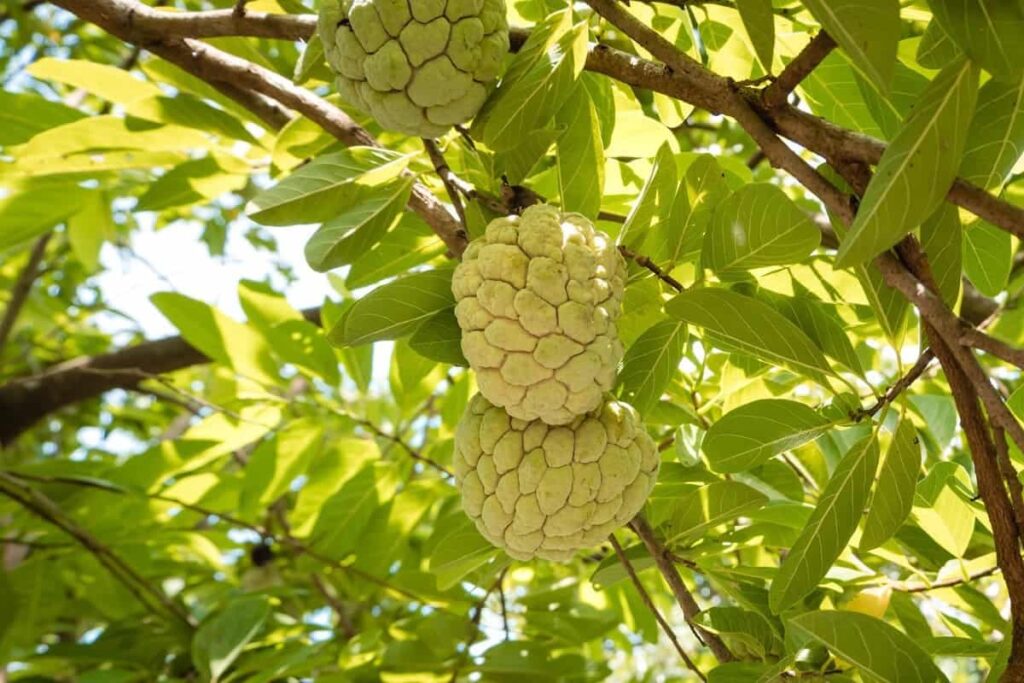
The starting stage of a custard apple is slow. After around four years in the ground, the plants start blooming. Annona species only produce blooms on new growth this season, never on wood from the previous year. Custard apples have a very long blooming period, starting in March or April and going through July or August.
The best time to see flowers is in the spring, between April and May. It takes between 27 and 35 days for a flower bud to mature into a bloom. Only during the rainy season does fruit set begin, meaning that the late-set fruits have a short window of time to mature before the approach of winter. Fruits that aren’t fully matured when set are transformed into inedible stone fruits over the winter months, making early fruit setting crucial.
Do custard apple trees need pruning?
The custard apple tree takes a very long time to mature. It grows to the size of a small shrub, with several branches of varying ages and sizes. The fruits can be produced on both old and fresh wood. Pruning old wood lightly encourages new branch growth. Pruning should be done to prevent crowding and to encourage evenly spaced branches. Budded plants have consistent growth and need less maintenance.
During November and December, the custard apple often enters a dormant state. At the time of fruit harvest, the leaves turn a golden yellow before falling off in preparation for winter. For almost two months throughout the winter, the plants are completely bare of leaves until new growth appears in the spring. It’s best to prune in the early spring, just before the plant emerges from its winter slumber and produces new growth.
The success story of Mr. Naresh
Mr. Naresh is a farmer in Karimnagar district, Telangana, who used to cultivate long-term crops such as paddy and corn. However, as these crops’ market prices fluctuated often, he never saw huge profits. Sometimes he even faced losses. So to make constant profits, he wanted to cultivate a different crop.
In case you missed it: Custard Apple Cultivation Income, Yield, Project Report
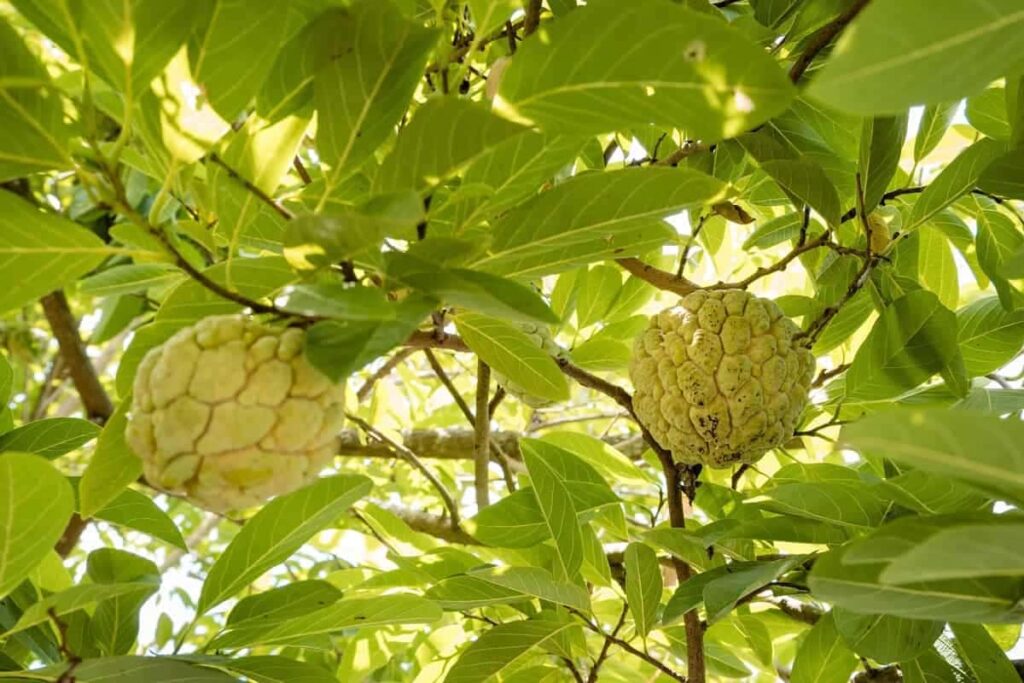
He thought of growing vegetables, but as those are short-term crops, he didn’t want to. He wanted to cultivate crops that stayed for a long period of years and yield a huge harvest. He started searching for what crop to grow. When he met a few friends on this matter, they advised him to cultivate Custard apple plants as they are both long-living and have a reasonable price in the market. This thought struck his mind.
He then immediately consulted his district’s agricultural officers, and they also replied positively about cultivating custard apples. He then started gathering the capital and started his venture. He is now earning huge profits from his Custard apple farm. How did this happen? Below we will learn about the success story of Mr. Naresh, custard apple plant cultivation details, his experiences, and the profits involved in his Custard apple farm.
Plant selection details, according to Mr. Naresh.
Mr. Naresh says that he selected these plants to cultivate as they are easy to grow and don’t require much maintenance. He has a 4-acre farm on which he decided to cultivate these plants. Also, these plants can withstand harsh climatic conditions. Custard apples can yield economically for more than 15 years. However, the harvest starts from the 3rd year onwards.
These plants yield very well, and custard apples have huge demand in the market. This was the perfect long-term crop for him, as Mr. Naresh only wanted long-term crops. Custard apple plants can grow in any type of soil; they don’t have many preferences. These plants are also less prone to pests and diseases, reducing pesticide and insecticides costs.
In case you missed it: Custard Apple Farming Project Report (Sitaphal), Profits
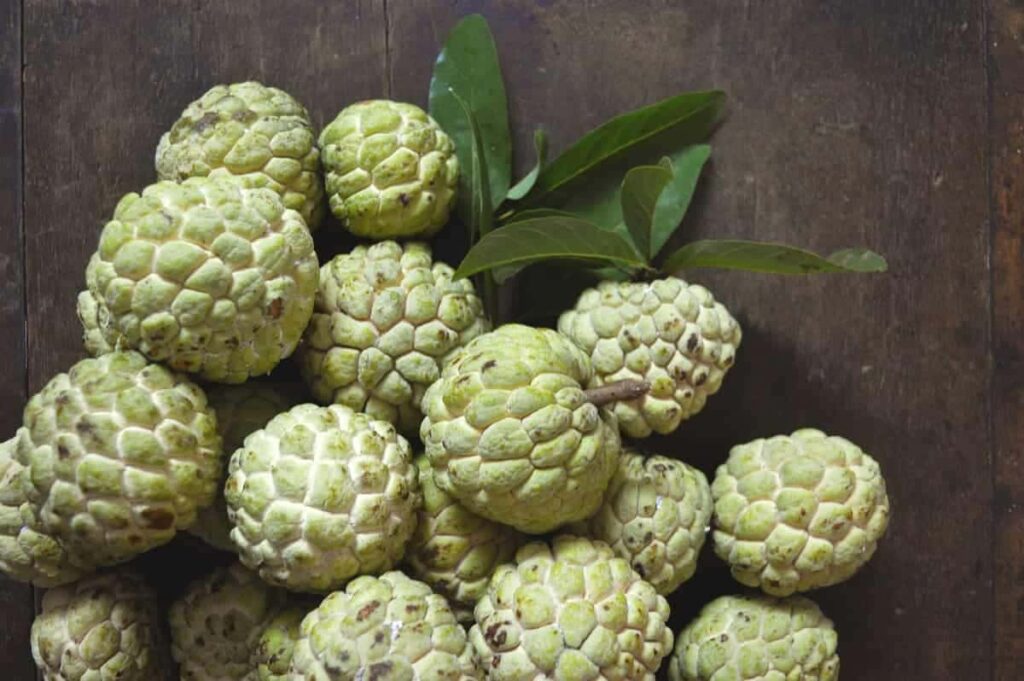
Custard apple cultivation details, according to Mr. Naresh
As mentioned above, custard apple grows in any type of soil. On his 4-acre farm, Mr. Naresh had red soil. After plowing, he added chicken manure, cow manure, and animal manure into his land, and then the land was plowed thoroughly again. Once the manure is properly mixed with this, you must plan the spacing for custard apple plants. The planting process often takes place during the rainy season.
Before the monsoon season begins, pits measuring 60 by 60 by 60 centimeters are dug, and they are then filled with a high-quality FYM, single super phosphate, and neem cake, says Mr. Naresh. Mr. Naresh placed 9 ft between the plants in each row and 12 ft between each row. With this spacing, Mr. Naresh could plant 450 plants per acre on his farm. Mr. Naresh says that he bought these plants from Maharashtra in 2019.
He chose NMK 1 gold variety for cultivation on his land. One of the greatest advantages of growing custard apples is that they are an unseasonal fruit, says Mr. Naresh. When it comes to watering, Mr. Naresh says that these plants won’t require any water. Only in summer do they need to be watered once a week. Apart from this, these plants won’t require water in any season, says, Mr. Naresh. This crop is beneficial for farmers who live in water-scarce regions.
Regarding fertilizers, animal manure should be provided to crops once a year. That’s it. No other fertilizer will be needed for these plants. Mr. Naresh says these plants are not at all prone to any diseases, as these are wild plants that grow in hilly regions. Also, the leaves have very good ayurvedic elements, which will keep the pests and diseases far from the plant. Pruning should be done once a year, that too very lightly. Deep pruning is not necessary for this plant.
In case you missed it: Custard Apple Farming (Sitaphal), Planting, Care
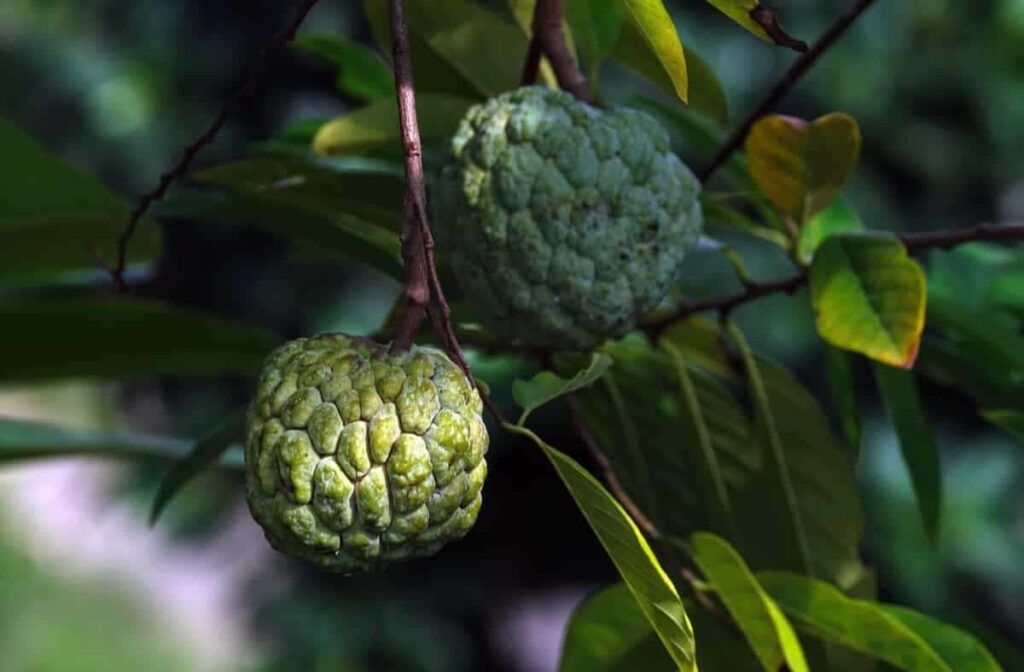
As these plants have no maintainable needs, they won’t need any labor costs. He added that the only time labor required would be at the time of planting and harvesting. Weeding is essential for this crop, says Mr. Naresh. Weeds should be picked from time to time. Weeds will increase the competition for nutrients, so your crop will grow very slowly. Hand weeding is ideal.
You can also remove weeds by adding chemicals, but this process is not recommended as the chemicals will make your soil infertile. Regarding investment, custard apple cultivation involves a very significant investment, says Mr. Naresh. He says the investment only involves plant, labor, and little manure costs. At most, the investment will not go beyond 45,000 rupees per acre.
Compared with other fruits, custard apple cultivation involves much less investment and maintenance, says Mr. Naresh. Marketing will not be a problem as these fruits can be grown everywhere, and many people will be willing to buy these. Also, the variety Mr. Naresh chose was very easy to sell, as it can be stored for up to 7 to 10 days after harvesting. He added that this variety would yield bigger fruits and a sweet taste.
Investment and profit analysis of Mr. Naresh’s custard apple farm
Mr. Naresh’s harvested his crop now, his sixth year after planting. In the first two years, you won’t get any yield. In the third year, you can get nearly 5 to 11 fruits per tree and a yield of nearly 3 to 5 tons per acre. Apart from all the investment, you can profit nearly 2 lakh rupees per acre. In the 4th year, you can get a profit of nearly 3 to 3.5 lakh rupees per acre; in the 5th year, you can get a profit of nearly 4.5 to 5 lakh rupees per acre. When the plant enters the 8th year, you can expect nearly 25 tons per acre, says Mr. Naresh. This is huge.
As this is his 6th year, Mr. Naresh got a net profit of nearly 24 lakh rupees from his whole farm. He says that the investment won’t go beyond 45,000 rupees per year. He says that he expects more profit from his farm in the coming years and also thinking of expanding his farm to another 4 acres. He says that he is happy and satisfied with his venture and says that he is financially very stable now.
- Types of Pesticides Used in Agriculture: A Beginner’s Guide
- Economical Aquaculture: A Guide to Low-Budget Fish Farming
- 15 Common Planting Errors That Can Doom Your Fruit Trees
- How to Make Houseplants Bushy: Effective Tips and Ideas
- Innovative Strategies for Boosting Coconut Pollination and Yield
- Pollination Strategies for Maximum Pumpkin Yield
- The Complete Guide to Chicken Fattening: Strategies for Maximum Growth
- Natural Solutions for Tulip Problems: 100% Effective Remedies for Leaf and Bulb-Related Issues
- Revolutionizing Citrus Preservation: Towards a Healthier, Greener Future
- Natural Solutions for Peony Leaf and Flower Problems: 100% Effective Remedies
- Maximizing Profits with Avocado Contract Farming in India: A Comprehensive Guide
- Natural Solutions for Hydrangea Problems: 100% Effective Remedies for Leaf and Flowers
- The Ultimate Guide to Choosing the Perfect Foliage Friend: Bringing Life Indoors
- From Sunlight to Sustainability: 15 Ways to Use Solar Technology in Agriculture
- The Ultimate Guide to Dong Tao Chicken: Exploring from History to Raising
- The Eco-Friendly Makeover: How to Convert Your Unused Swimming Pool into a Fish Pond
- Mastering the Art of Delaware Chicken Farming: Essentials for Healthy Backyard Flocks
- 20 Best Homemade Fertilizers for Money Plant: DIY Recipes and Application Methods
- How to Craft a Comprehensive Free-Range Chicken Farming Business Plan
- Brighten Your Flock: Raising Easter Egger Chickens for Beauty and Bounty
- How to Optimize Your Poultry Egg Farm Business Plan with These Strategies
- Subsidy for Spirulina Cultivation: How Indian Government Schemes Encouraging Spirulina Farmers
- Ultimate Guide to Raising Dominique Chickens: Breeding, Feeding, Egg-Production, and Care
- Mastering the Art of Raising Jersey Giant Chickens: Care, Feeding, and More
- Ultimate Guide to Raising Legbar Chickens: Breeding, Farming Practices, Diet, Egg-Production
- How to Raise Welsummer Chickens: A Comprehensive Guide for Beginners
- How to Protect Indoor Plants in Winter: A Comprehensive Guide
- Ultimate Guide to Grow Bag Gardening: Tips, Tricks, and Planting Ideas for Urban Gardeners
- Guide to Lotus Cultivation: How to Propagate, Plant, Grow, Care, Cost, and Profit
- Agriculture Drone Subsidy Scheme: Government Kisan Subsidy, License, and How to Apply Online
- Ultimate Guide to Raising Araucana Chickens: Breed Profile, Farming Economics, Diet, and Care
- Bringing Hydroponics to Classroom: Importance, Benefits of Learning for School Students
- Ultimate Guide to Raising Polish Chickens: Breed Profile, Farming Economics, Diet, and Care
- Ultimate Guide to Raising Australorp Chickens: Profile, Farming Economics, Egg Production, Diet, and Care
- Silkie Chicken Farming: Raising Practices, Varieties, Egg Production, Diet, and Care
- Sussex Chicken Farming: Raising Practices, Varieties, Egg Production, Diet and Care
Yes apple and vegetables farming natural farming